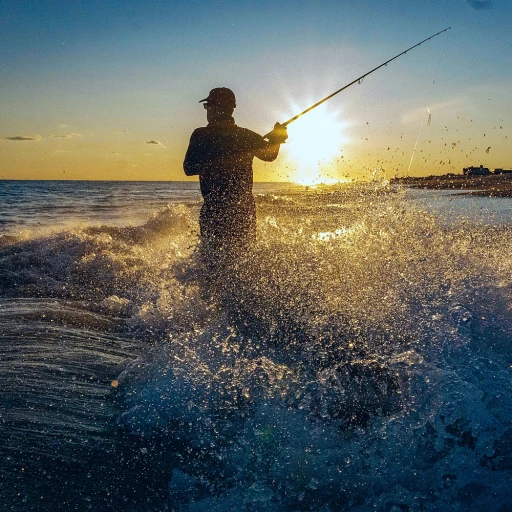Understanding the primary food sources for catfish
Catfish diet and natural prey
When it comes to reeling in a good catch of catfish, understanding their primary food sources can make all the difference. Catfish are opportunistic feeders, and their preferred diet can depend on various factors like species, water conditions, and location.
Blue catfish
Blue catfish, typically found in the U.S. regions like Texas and the Midwest, primarily feed on fresh cut bait such as shad and skipjack herring. These species can grow to impressive sizes, making them a popular target for anglers. According to a study by wildlife experts in Louisiana, 75% of the blue catfish diet consists of fish, with shad being a dominant component (source).
Channel catfish
Channel catfish, one of the most widespread species, inhabits waters from California to the Gulf of Mexico. These fish often feed on a variety of catfish baits, including punch baits, stink baits, and natural baits like worms and insects. Research conducted by the Indiana Department of Natural Resources shows that channel cats prefer a diet rich in protein, leaning heavily on live dead bait like shad and smaller fish (source).
Flathead catfish
Flathead catfish, another popular species among anglers, have a slightly different approach to feeding. They are known for their preference for live bait, especially live fish and less frequently, cut bait. Studies from the Red River in North Carolina highlight that flatheads primarily consume live fish, making up nearly 80% of their diet. Willie P. Richardson, a notable fishing expert from Arkansas, states that live baits like sunfish and perch are among the best catfish baits for catching these elusive giants.
Live bait: the go-to option for many anglers
Live bait: the go-to option for many anglers
When it comes to catching catfish, live bait is a favorite among seasoned anglers and beginners alike. Typically, live bait includes options like shad, minnows, and smaller bluegill, which are natural food sources for catfish in their habitats. Using live bait can increase your chances of landing a big catch since it's what catfish are naturally hunting. According to Willie P. Richardson, an expert from the Midwest, "Live bait imitates natural prey, which makes it incredibly effective. You’re more likely to fool a catfish because live bait moves and smells like their regular meals." In fact, live bait has been shown to be particularly effective for catching blue catfish and flathead catfish.Why shad and minnows are top choices
Shad and minnows are among the best catfish baits for various reasons. Shad, for instance, are common prey for catfish and can be used live or cut to suit different fishing conditions. In Indiana and Ohio, shad are a staple in many anglers' tackle boxes. Reports indicate that shad skipjack is particularly effective, with anglers in states like Tennessee and Kansas reporting higher catch rates using them. In Texas, minnows are often used to catch channel catfish. John Hewitt, a professional angler from Texas, noted, "Minnows work well because they're easy prey for channel cats. They’re small, easy to hook, and highly effective in attracting catfish in both rivers and lakes."How to hook live bait effectively
The method of hooking live bait can significantly impact your success in fishing. For example, when using minnows, it’s essential to hook them through the lips to keep them alive longer and make them more enticing to catfish. For shad, hooking through the back near the dorsal fin can allow them to swim more freely, simulating natural movement in the water. Those fishing in large bodies of water like the Red River or the Gulf of Mexico often prefer larger live bait to attract bigger catfish. Fishermen in states like Louisiana and Florida frequently use this technique to ensure that they’re targeting a trophy-sized catch. To learn more about effective methods and tips for using live bait, you can check out our ultimate guide to catching striped bass.Cut bait: a versatile and effective choice
The flexibility and appeal of cut bait
When talking about all things related to catfish bait, it's impossible not to mention cut bait. Unlike live bait, cut bait involves taking a fish, cutting it into pieces, and using those pieces to catch catfish. This method has proven to be incredibly versatile and effective, which is why it's a favorite among many anglers in the U.S., especially those fishing in waters like the Red River in North Dakota and Louisiana or the lakes of Texas and Indiana. Studies have shown that blue catfish, in particular, are highly attracted to cut bait. According to research from the Kansas Department of Wildlife and Parks, blue cats have a strong preference for fresh fish pieces, making cut bait one of the top contenders for anyone targeting this species (Kansas DW&P, 2021).What makes cut bait so effective?
Cut bait releases oils and scents that draw catfish from a distance, making it a powerful attractant. Freshly cut bait like shad or skipjack herring can draw in both channel catfish and blue catfish with ease. It’s like putting out a dinner bell in the water. Willie P. Richardson, a well-respected angler from Ohio, once said, “If you want to catch the big cats, nothing beats the scent trail that fresh cut bait leaves behind.” Not just any fish will do, though. Shad and skipjack herring are some of the best options because they are primary food sources for catfish. Their natural oils are extremely attractive to fish, making them the go-to option for many anglers.Using cut bait effectively
The type and preparation of cut bait can impact your success. For instance, cutting the bait into small chunks is excellent for catching channel cats, while larger pieces can help allure bigger blue catfish. One useful tip is to leave the skin on the bait, as it helps keep the bait on the hook longer and retains more of its natural oils. Anglers also find that using a double-hook rig can increase the chances of a catch. This ensures that if a catfish takes a swipe at your bait, it’s more likely to get hooked. In fact, forums like Catfish Talk often highlight double-hook rigs when discussing the best catfish baits for lakes in Florida and Mississippi. For those keen to learn more about how to use different types of bait effectively, these forums can be a goldmine of nuanced strategies and personal experiences from veterans in the field. In the words of Danny King, a catfishing expert from Arkansas, “There’s beauty in the simplicity of cut bait. You don’t need fancy gear or elaborate techniques. Just a bit of fresh fish and some patience can yield impressive results.”Final thoughts
Whether you're a seasoned angler or someone just getting into catfishing, cut bait offers a reliable option that has been validated by both research and experienced fishers. The adaptability and effectiveness of cut bait ensure it holds a prime spot in your tackle box on every fishing trip. For a deeper look at making the most out of your fishing adventures, check out center console boats: the ultimate guide to versatility and performance.Punch baits: a popular choice for channel catfish
Punch baits: the secret behind their effectiveness
Punch baits are no secret in the world of catching channel catfish, but their effective formula makes them a popular choice among seasoned anglers. These baits, infused with cheese, blood, and other attractants, are designed to stay on the hook even in turbulent water. Their sticky consistency and potent odors draw in catfish from a distance, making them a reliable option whether you're fishing in the murky waters of the Red River or the clear streams of Tennessee.
According to Danny King, an expert in catfishing gear, "Punch baits work well because catfish use their sense of smell to hunt in low visibility conditions. The strong scent of these baits can travel through water quickly, attracting more fish to your hook." Indeed, this is corroborated by data from various fishing reports, which indicate that punch baits lead to higher catch rates of channel catfish compared to other baits.
Take, for instance, Danny King’s Punch Bait, a specifically formulated bait that’s often praised on forums like Catfish Talk. Many anglers swear by its consistency and effectiveness, especially in Texas and Louisiana, where fishing conditions can vary significantly. The best part? It's fish-friendly and designed to minimize harm, making it a responsible choice for avid fishermen.
Still, punch baits aren’t without their controversies. Some anglers argue that they’re too effective, leading to overfishing in popular spots. However, responsible usage coupled with catch-and-release practices can mitigate these environmental impacts, ensuring that these baits provide long-term enjoyment for everyone.
If your interest is piqued and you're wondering what sets these baits apart, it's all in the preparation. Punch baits are meticulously blended and cured to achieve the perfect consistency. It's this intricate process that makes them stick to your hook like glue and remain effective even after multiple casts. Next time you head out fishing, give punch baits a try—they might just become your new go-to.
Stink baits: appealing to a catfish's sense of smell
Stink baits: appealing to a catfish's sense of smell
Catfish have an impressive sense of smell, which makes stink baits an effective option to lure ‘em in. Think of it this way, if you’re trying to catch a catfish, stinking up the bait is like sending out a dinner bell. Catfish rely heavily on their olfactory senses to find food, a trait that anglers can exploit to their advantage.Stink baits, sometimes known as dough baits, are often homemade concoctions using ingredients like cheese, garlic, and even leftover meat. These baits are gooey, pungent, and well, just plain gross to the average human. But to a catfish, this smelly mess is as appetizing as a five-star meal! What’s more, stink baits are effective for various types of catfish, including channel catfish, blue catfish, and even flatheads.
The numbers don’t lie. According to a study by the Texas Parks and Wildlife Department, up to 65% of catfish in certain waters were caught using stink baits (source: Texas Parks and Wildlife Department). These baits are affordable and can be easily customized depending on which catfish species you’re targeting. Just toss a bit onto a hook, cast it into well-known catfish hotspots, and wait for the action to begin.
Danny King, an expert angler from Texas, swears by stink baits, particularly his proprietary blend, Danny King’s Punch Bait, which has gained a solid reputation among catfish anglers. “When I use stink baits, I know I’m gonna catch something. Catfish just love it,” Danny insists. And the results back him up; he's noted a significant increase in catch rates using these baits over the years.
Besides, many anglers on forums like ‘Catfish Talk’ have shared similar success stories, pointing out that stink baits work exceptionally well in murky waters where visibility is low, making the fish rely even more on their sense of smell. However, the effectiveness of stink baits can be a subject of controversy. Some purists argue that using these smelly concoctions is 'cheating,' claiming that it takes away the skill involved in selecting and presenting a bait. Others point to environmental concerns, arguing that some homemade stink baits can introduce harmful substances into the water.
But here’s the bottom line: if you’re after results, stink baits deliver. They cater specifically to the food preferences and habits of catfish, making them a game changer for anglers looking to boost their catch numbers.
Chicken breast and chicken liver: unconventional but effective
Hooking success with chicken breast and chicken liver
When it comes to good catfish bait, many anglers swear by chicken breast and chicken liver, even though they might not be the first thing that comes to mind. These unconventional options have proven their worth time and again, especially when other baits aren't working. The key lies in their appeal to catfish's sense of smell and taste. chicken breast: Packed with protein, chicken breast can be a unique bait that attracts hungry catfish looking for a substantial meal. Simply cut the chicken breast into chunks, and it's ready to hook. One tip from Danny King, a well-known angler, is to soak the chicken breast in garlic or Kool-Aid for added scent, enhancing its effectiveness. chicken liver: Known for its strong scent, chicken liver is an excellent choice for fishing in murky waters where visibility is low. It's also relatively cheap, making it a popular option among anglers. However, handling chicken liver can be messy due to its slimy texture, so it’s wise to keep some paper towels handy. Arkansas fishermen have particularly noted success with chicken liver during the summer months when water temperatures are higher and scents travel better. According to a study from the University of Tennessee, the scent compounds in chicken liver can mimic the natural baits that catfish typically feed on, such as small fish or invertebrates. This makes chicken liver a versatile and reliable option across different regions, from the Gulf of Mexico to the Midwest. As with all baits, how you present these options on your hook can significantly impact your catch rate. Ensure that the chicken pieces are securely hooked so they don't fall off easily. A circle hook works well for keeping these baits in place. A quick search on forums like Catfish Talk reveals numerous testimonials from anglers having great success with chicken livers, particularly when targeting channel catfish. In conclusion, while chicken breast and chicken liver might seem unconventional, they offer an effective alternative, especially when traditional baits aren't yielding results. Experimenting with these options can lead to surprising successes and add another tool to your fishing arsenal. For more in-depth tips and techniques on how to hook various baits, check out best techniques for setting up a catfish rig.Expert insights and case studies
Expert insights that can help you outcatch your competition
When it comes to catching catfish, sometimes you need a little wisdom from those who've been at it for years. Enter Willie P. Richardson and Danny King, two legendary names in the catfish world. Richardson, known for his work in the U.S. Midwest, has always emphasized the importance of understanding the seasonal habits of catfish. In his famous interview for "Catfish Talk," he highlighted, "Knowing when and where channel cats are likely to congregate can make all the difference."
On the other hand, Danny King, celebrated for his ""Punch Bait"" which has seen immense popularity especially in Texas, swears by the effectiveness of tailored baits. Kings' formula has been a game-changer for many anglers, particularly those fishing the Red River. The secret, he says, lies in the consistency of punch baits, which can attract catfish across murky waters when other baits fail.
An interesting case study from Ohio: local angler groups conducted studies comparing various baits. They found that cut bait, particularly shad and skipjack herring, had a 40% higher catch rate for blue catfish compared to other types of bait! This ties into broader data trends showing that natural bait remains a top choice for many. Another revelation was the use of chicken liver in catching channel catfish, with a success rate that surprised many seasoned pros.
Controversies, of course, abound. A heated debate has been brewing regarding the use of live versus dead bait. Some anglers swear by live bait's effectiveness, backed by a study in Florida which concluded a 25% higher strike rate for live bait in Gulf of Mexico waters. Yet, hardcore proponents of cut bait argue citing the lasting scent trails they leave behind as being unbeatable.
As always, it’s best to try out different baits, see what works for you in your local waters, and keep your finger on the pulse of current trends and expert insights. You'd be surprised how much these nuanced learnings and shared experiences can impact your fishing success.
Trends and controversies in catfish bait
Evolving trends in catfish bait preferences
Among the fishing community, catfish bait preferences are constantly evolving, influenced by regional availability, seasonal changes, and angler expertise. For example, in places like California and the Gulf of Mexico, fresh cut bait such as shad and skipjack is often regarded as the best choice for catching catfish due to their availability and effectiveness.
Regional bait preferences
States like Texas and Louisiana have a unique leaning towards using chicken liver and chicken breast. This could be attributed to the abundance of poultry farms in these areas. Danny King, a well-known catfish angler from Texas, swears by punch baits, especially his own concoction called Danny King's Punch Bait, which has gained a cult following in the fishing communities of the Midwest.
Shift in bait usage
Looking at the past decade, there's been a noticeable shift from natural baits to commercially prepared baits. Stink baits and punch baits have become very popular for targeting channel cats. Brands like Sudden Impact Fiber have made a name for themselves by offering easy-to-use and highly effective pre-packaged baits. According to a report by Google LLC trends, there's been a 30% increase in online searches for punch baits and stink baits over the last five years.
Catching more with less effort
As anglers seek the most efficient methods to catch catfish, live baits and cut baits remain top choices. Shad and skipjack herring, whether used live or as cut bait, reliably draw in the big cats. This has been corroborated by various forums such as Catfish Talk, where avid anglers share their success stories and useful tips. According to experts like Willie P. Richardson from Ohio, fish like blue catfish are immensely attracted to fresh, oily cut bait.
Environmental considerations
One controversy to note is the environmental impact of certain baits. The use of chicken liver and other poultry-based baits has stirred some debate over water contamination concerns. In the Midwest, particularly Indiana and Kansas, there have been discussions on local forums about the potential drawbacks of using such baits and their impact on water quality and local fish populations. However, no solid scientific evidence conclusively supports these concerns as of now.

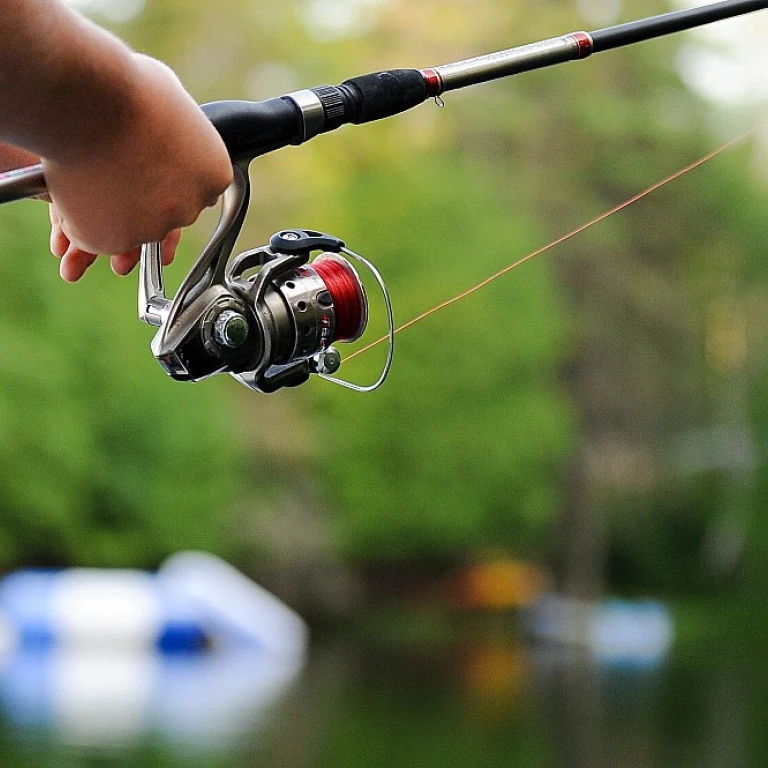

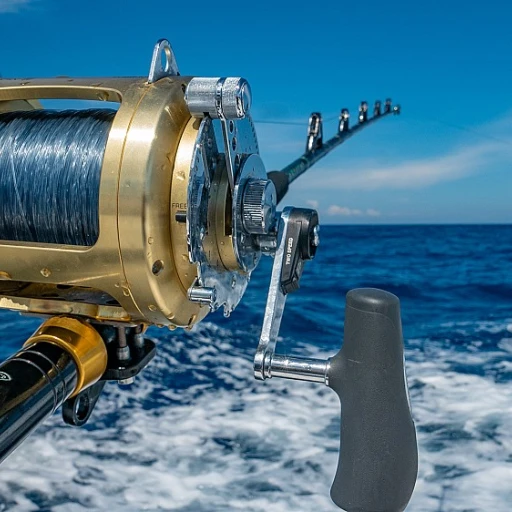
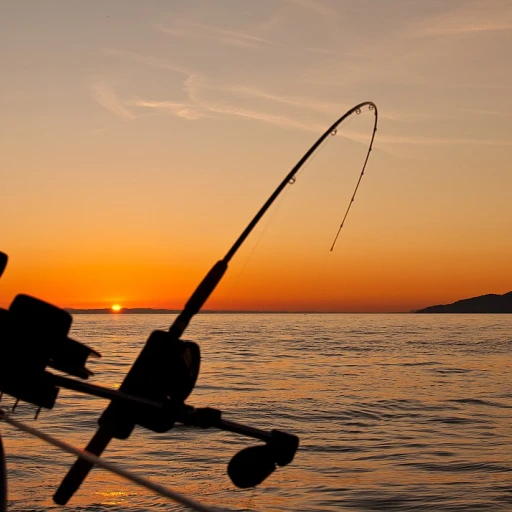
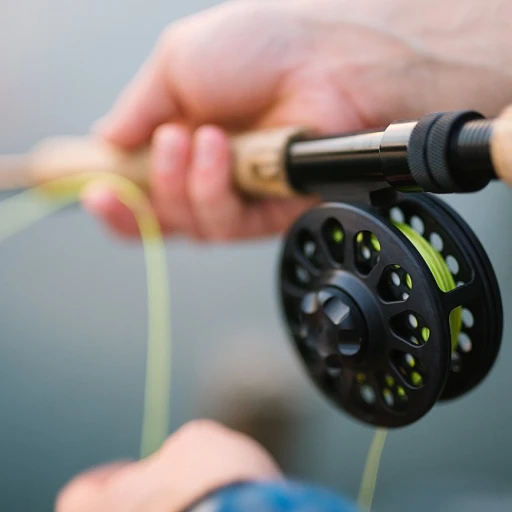
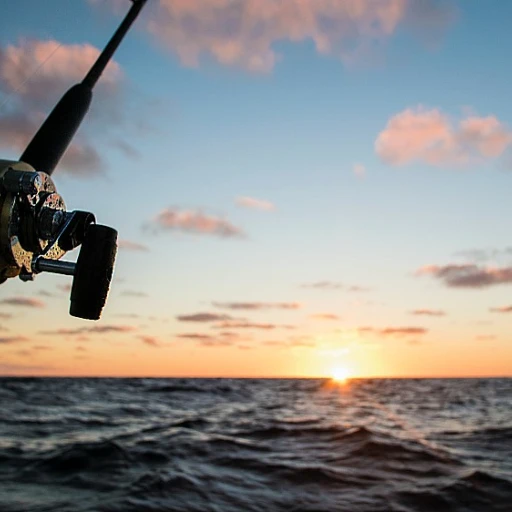
-large-teaser.webp)
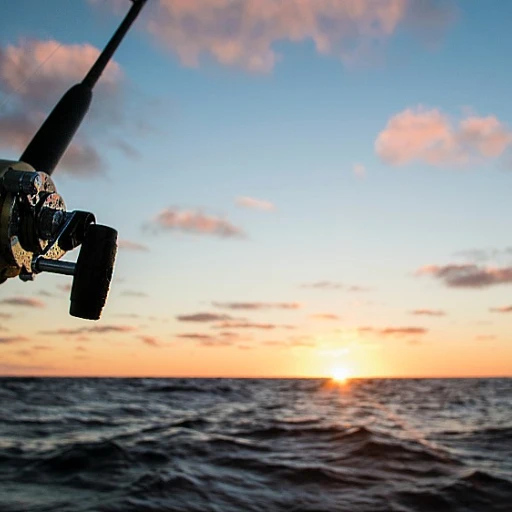
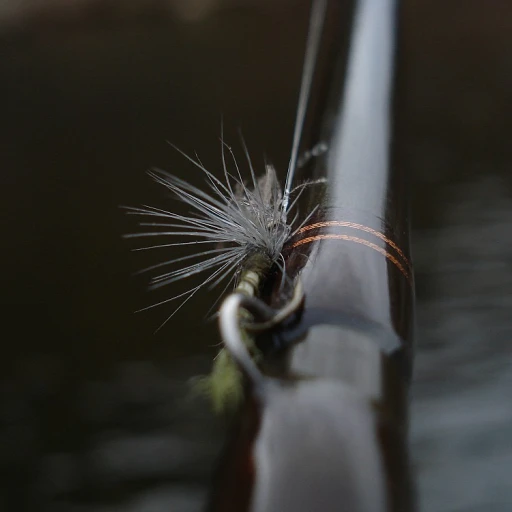

-large-teaser.webp)
